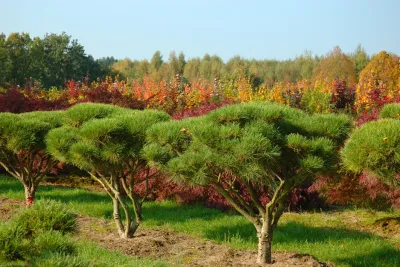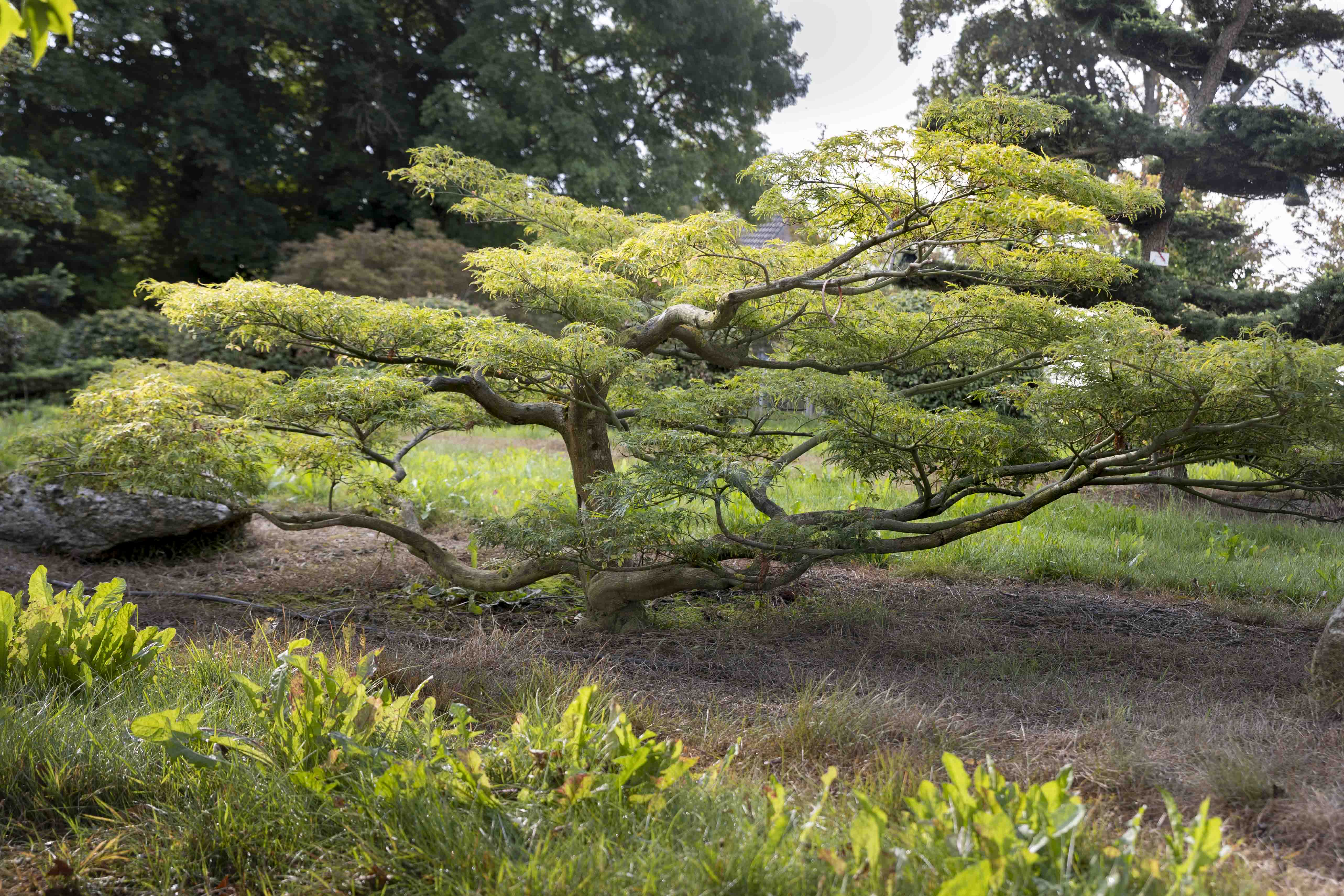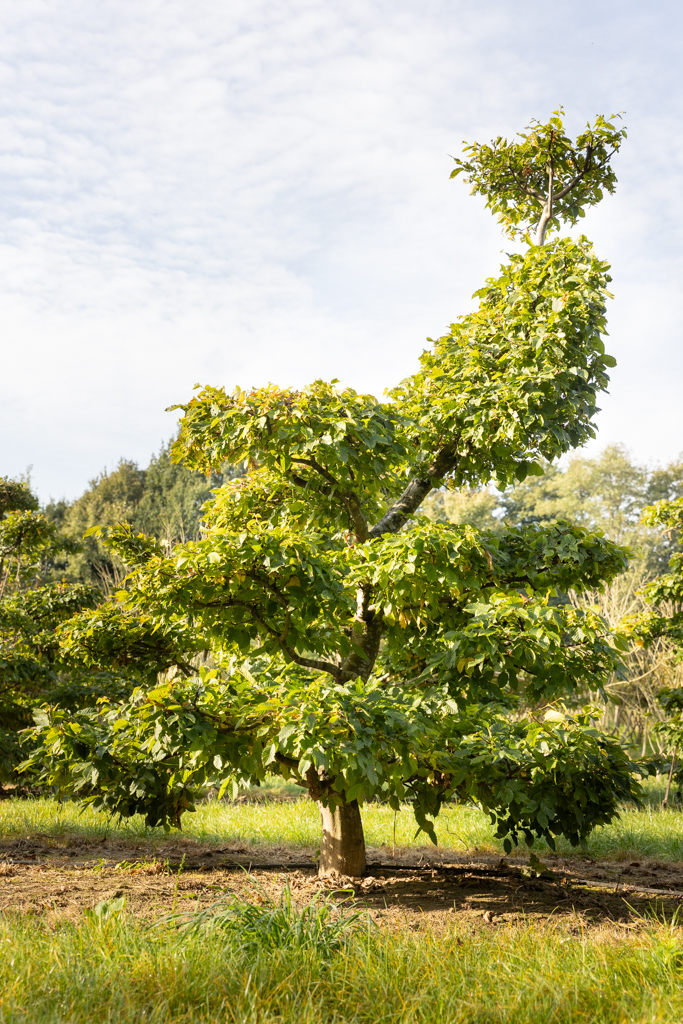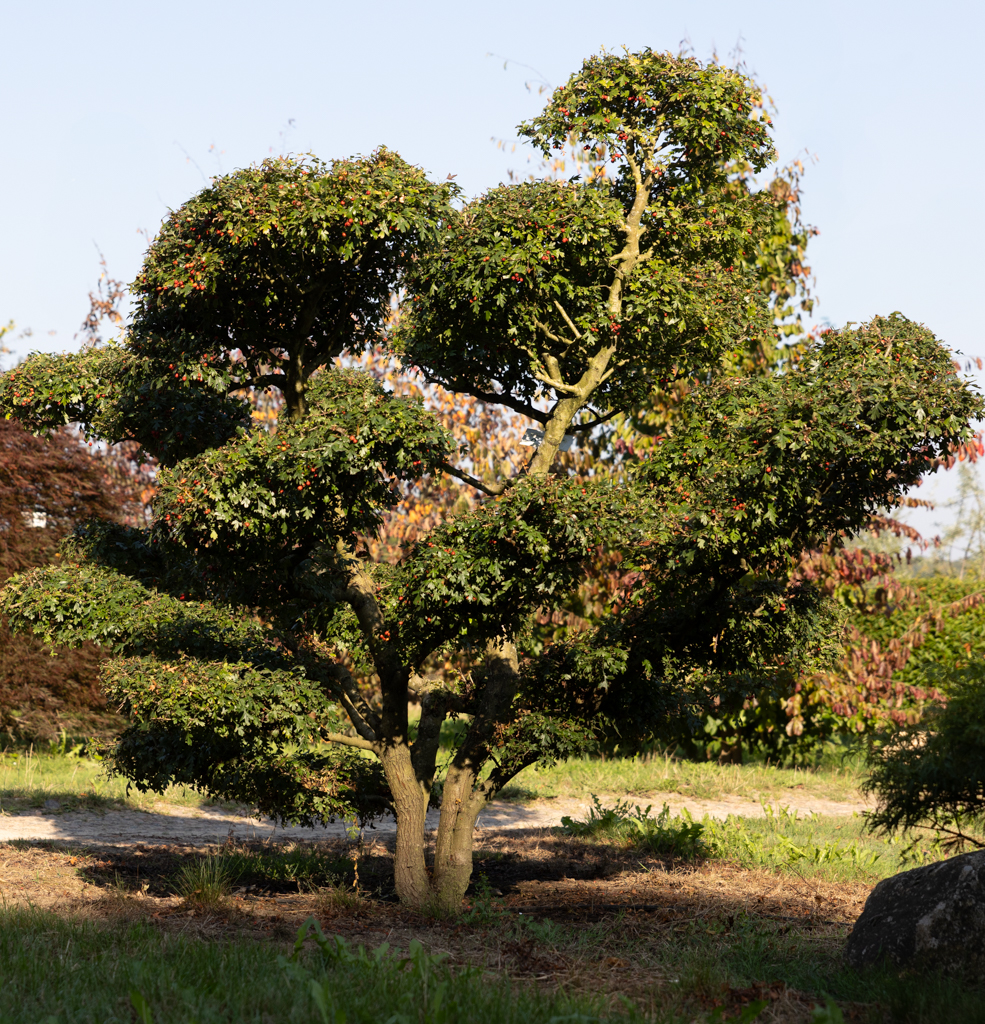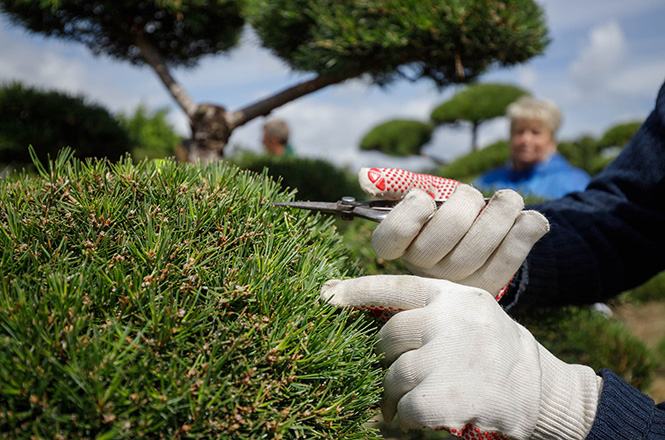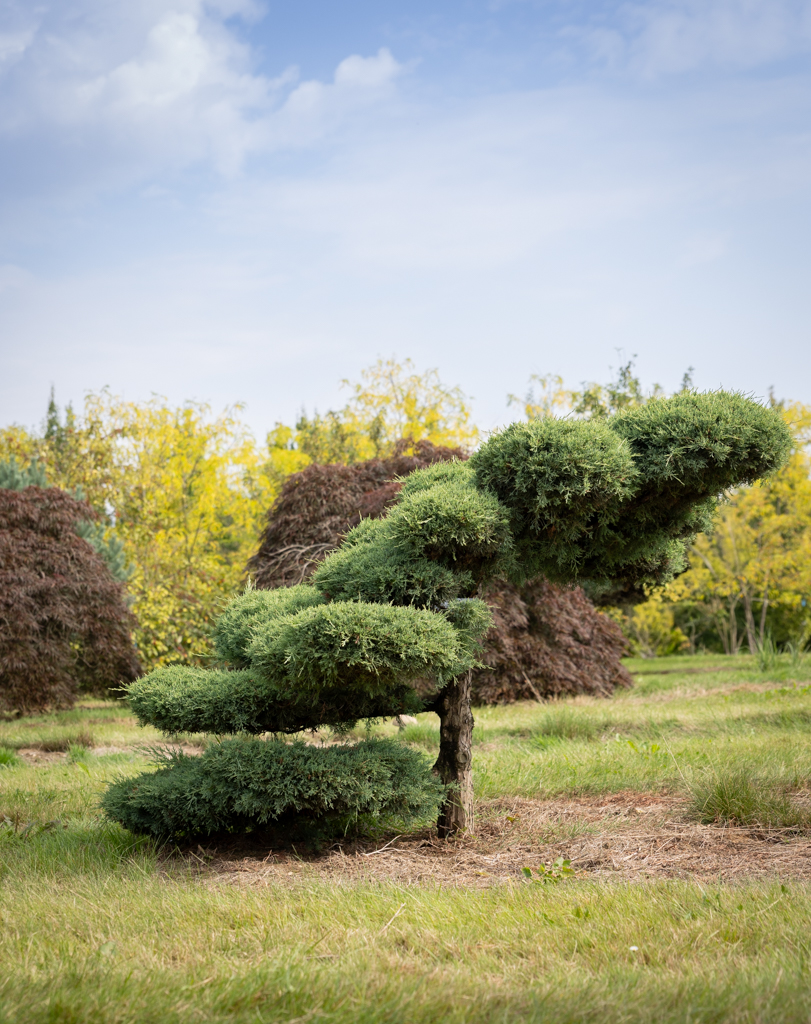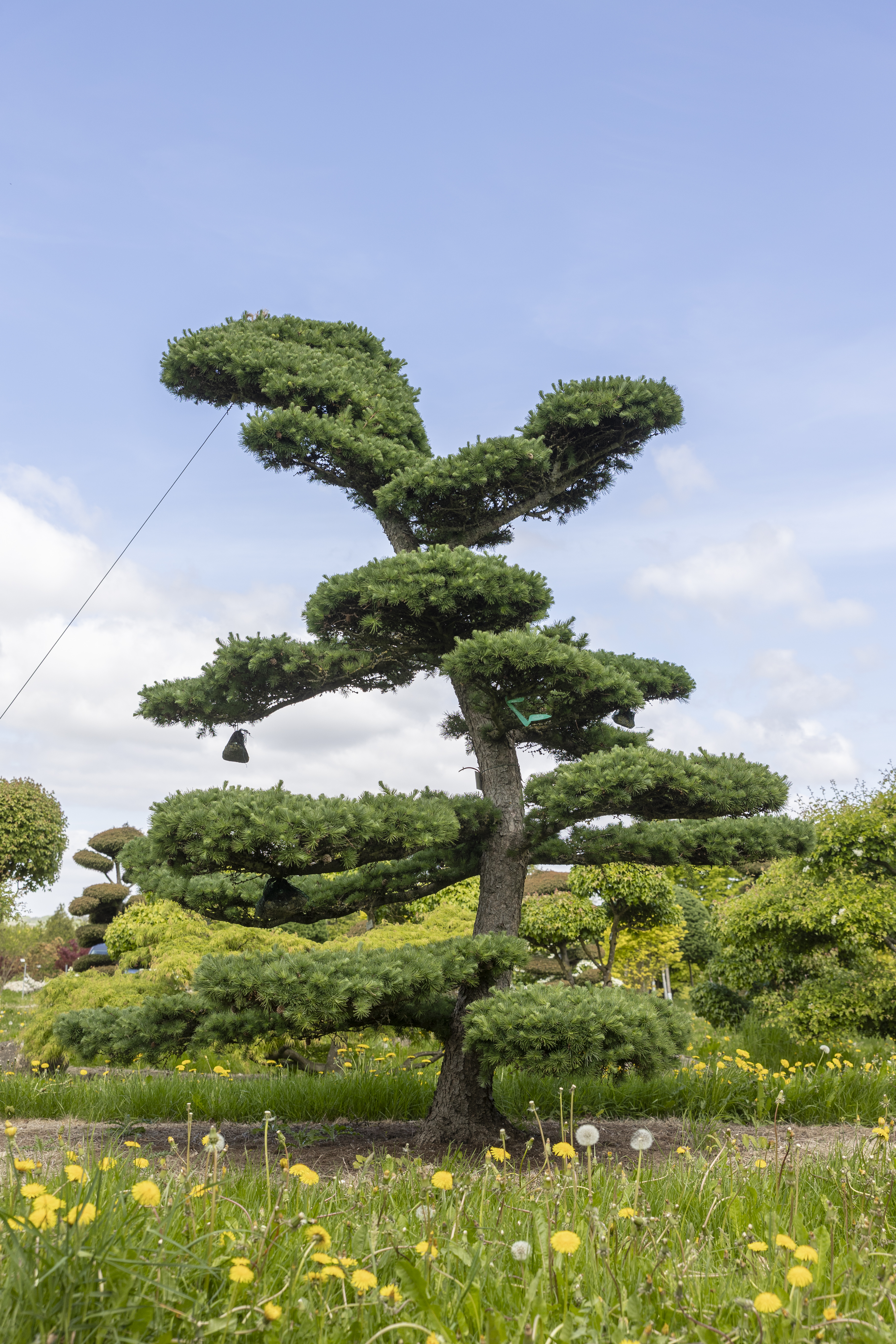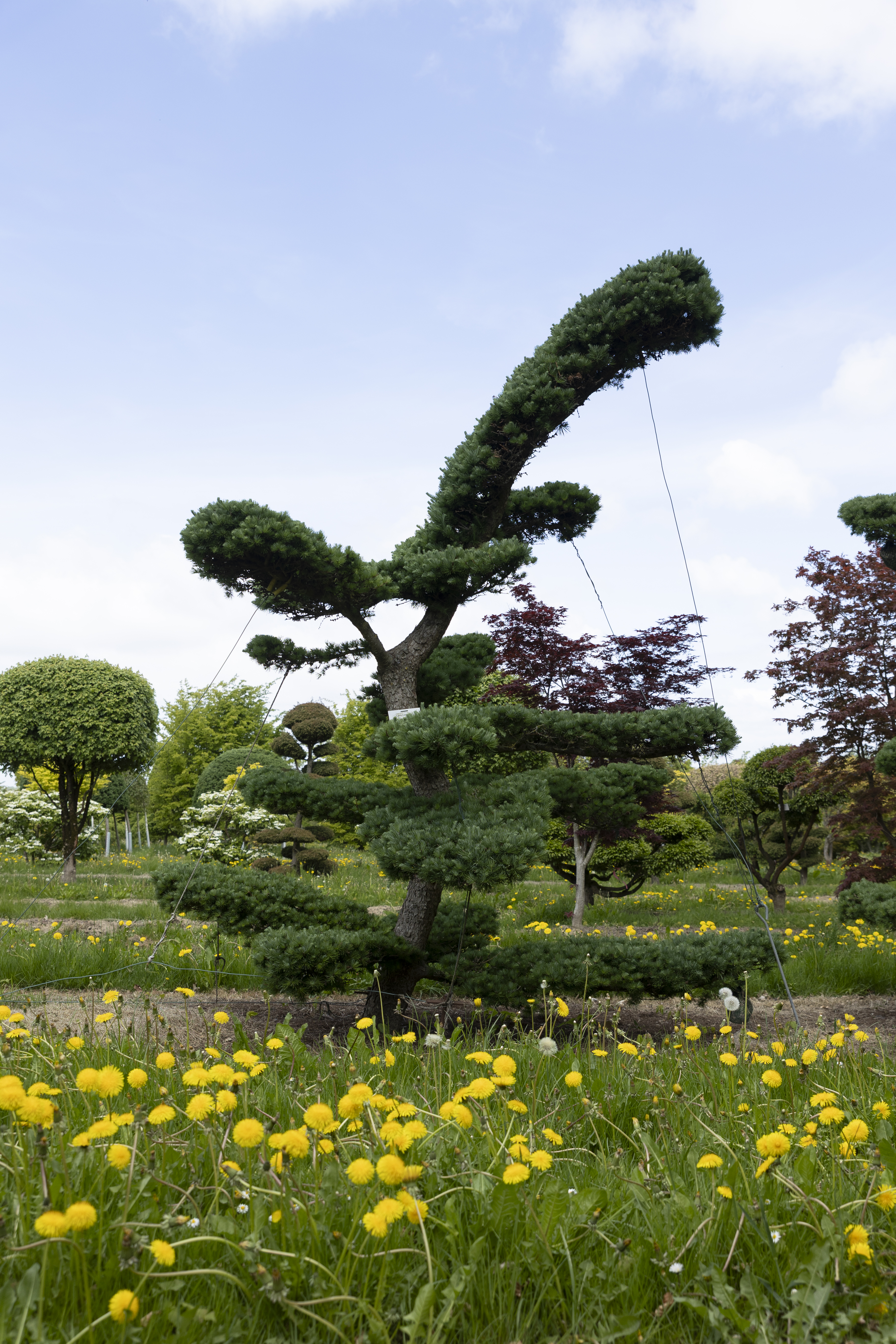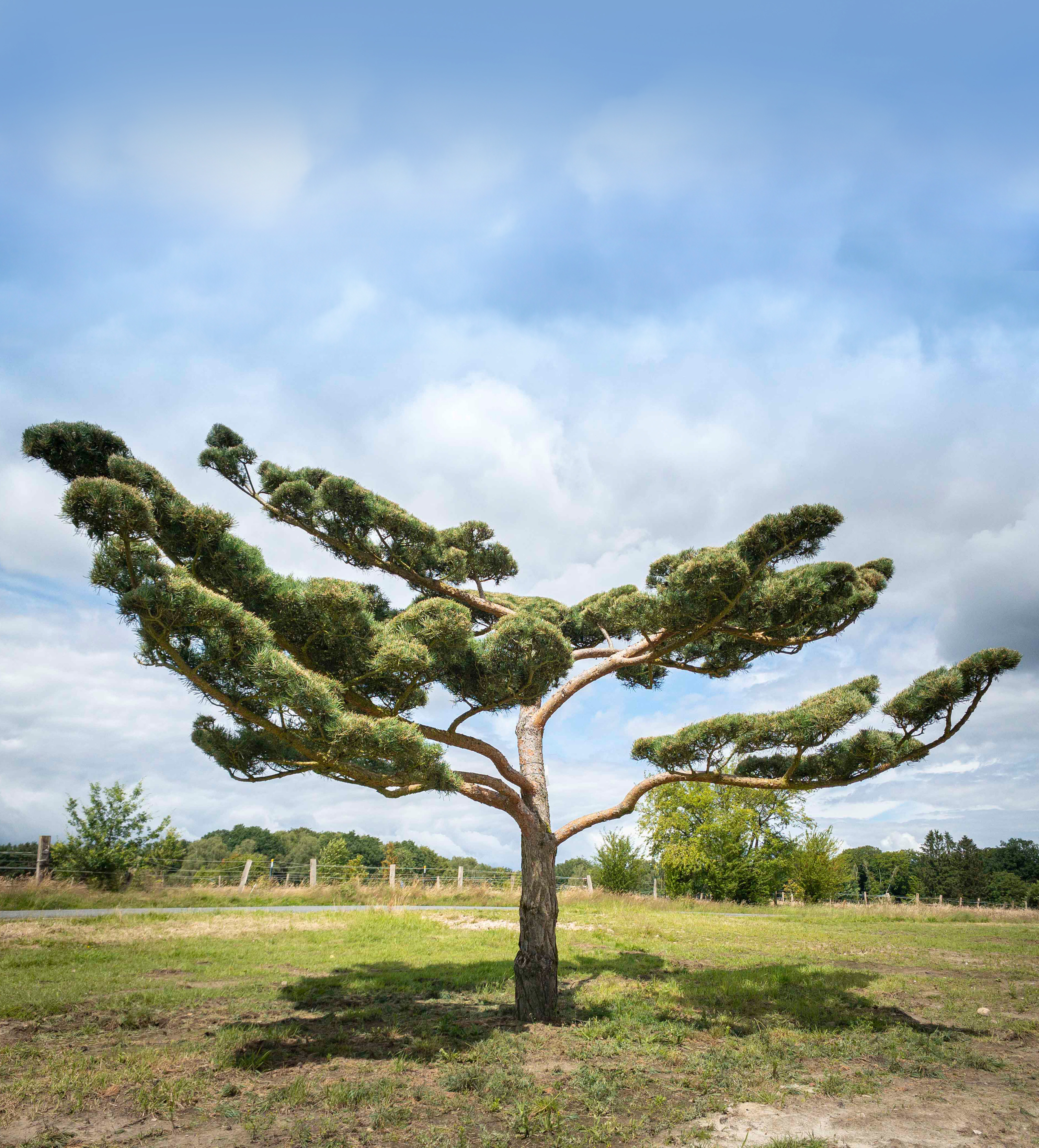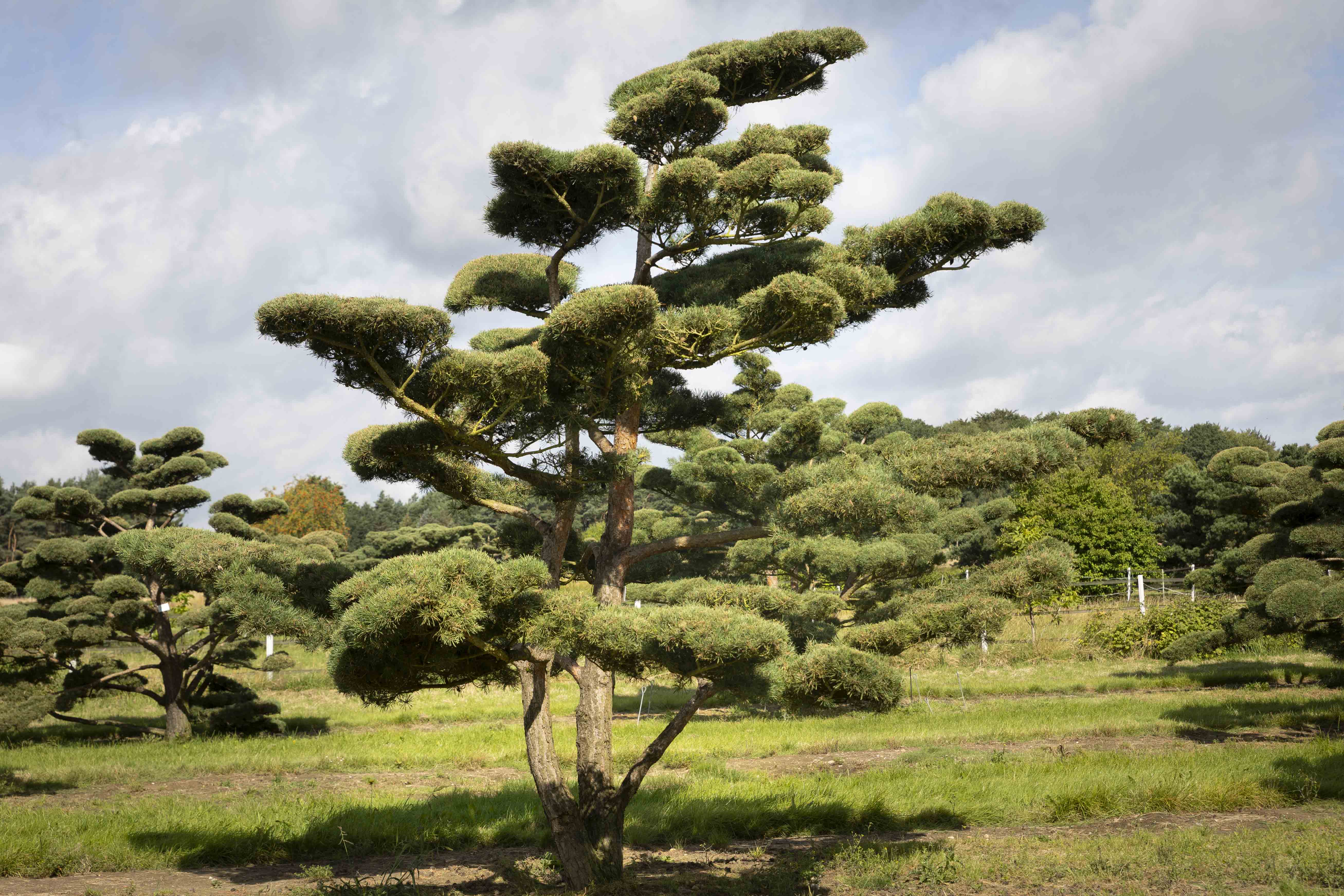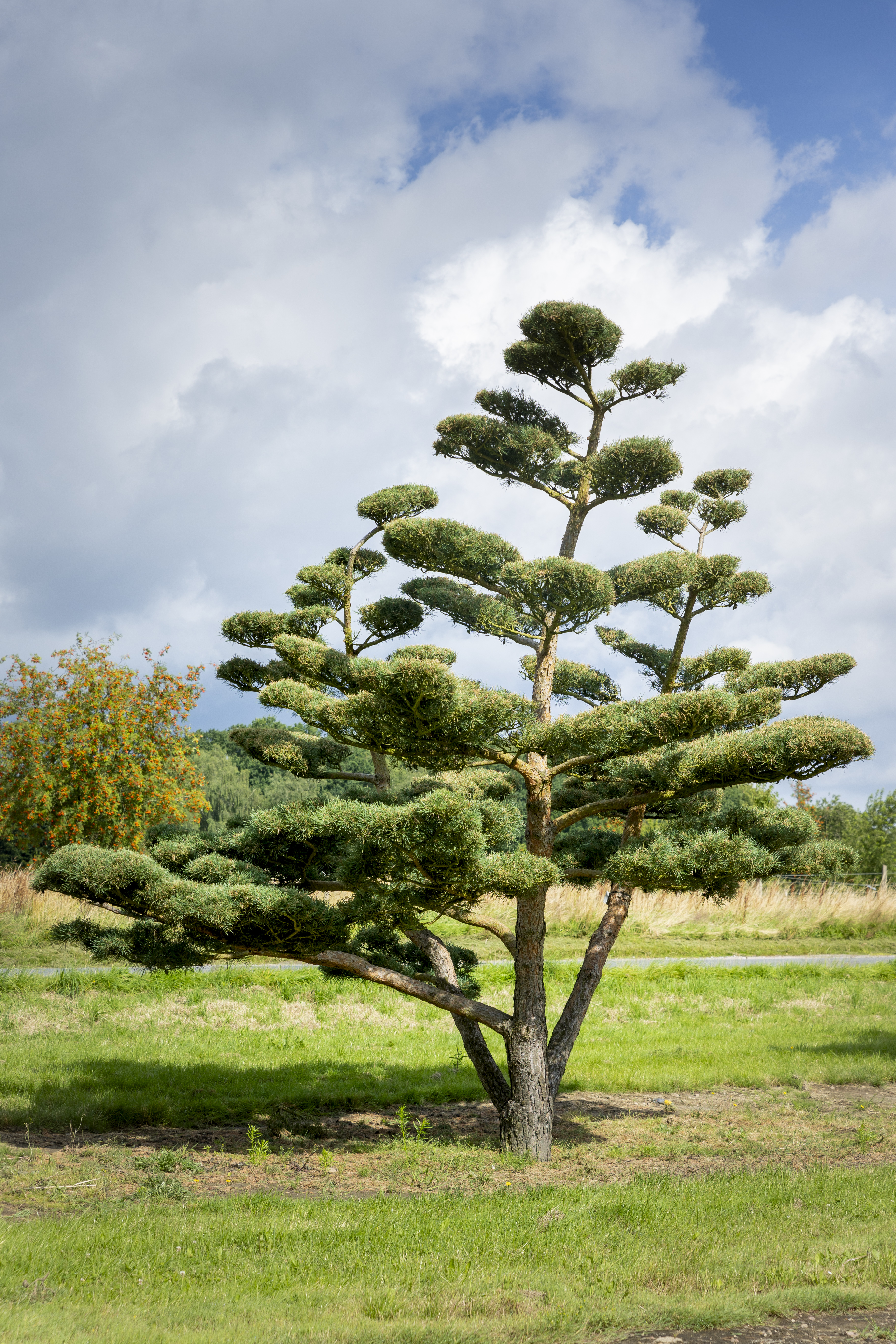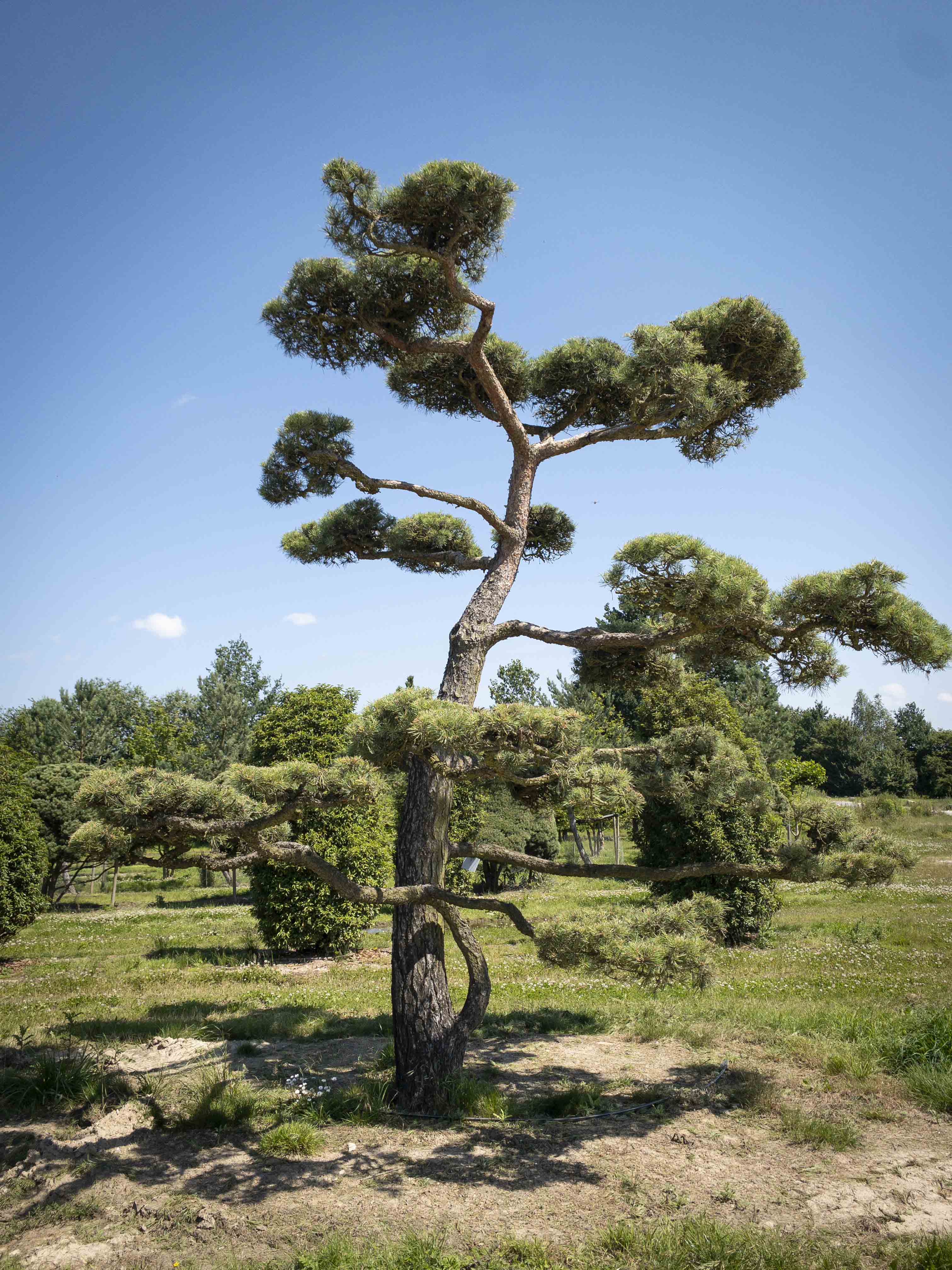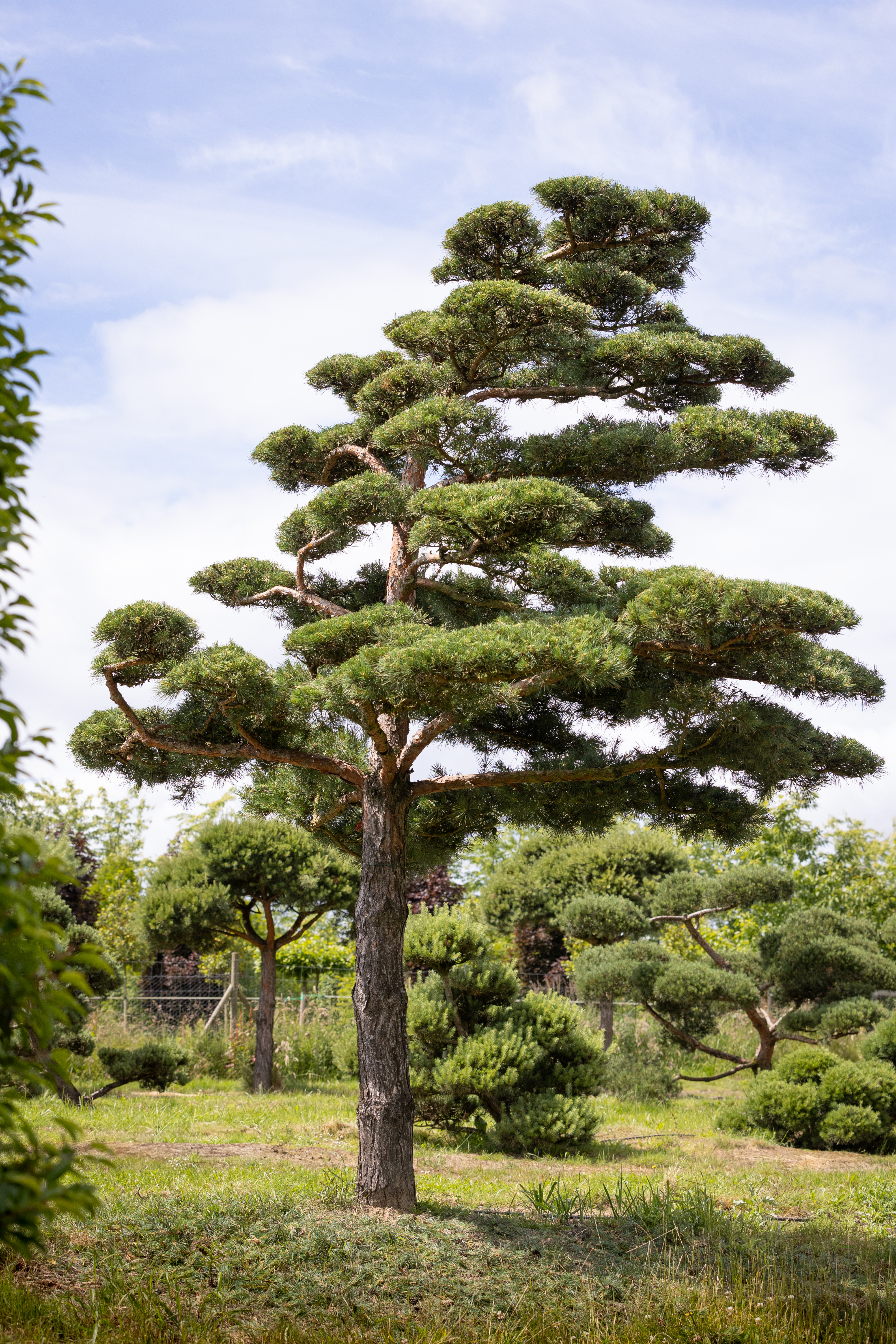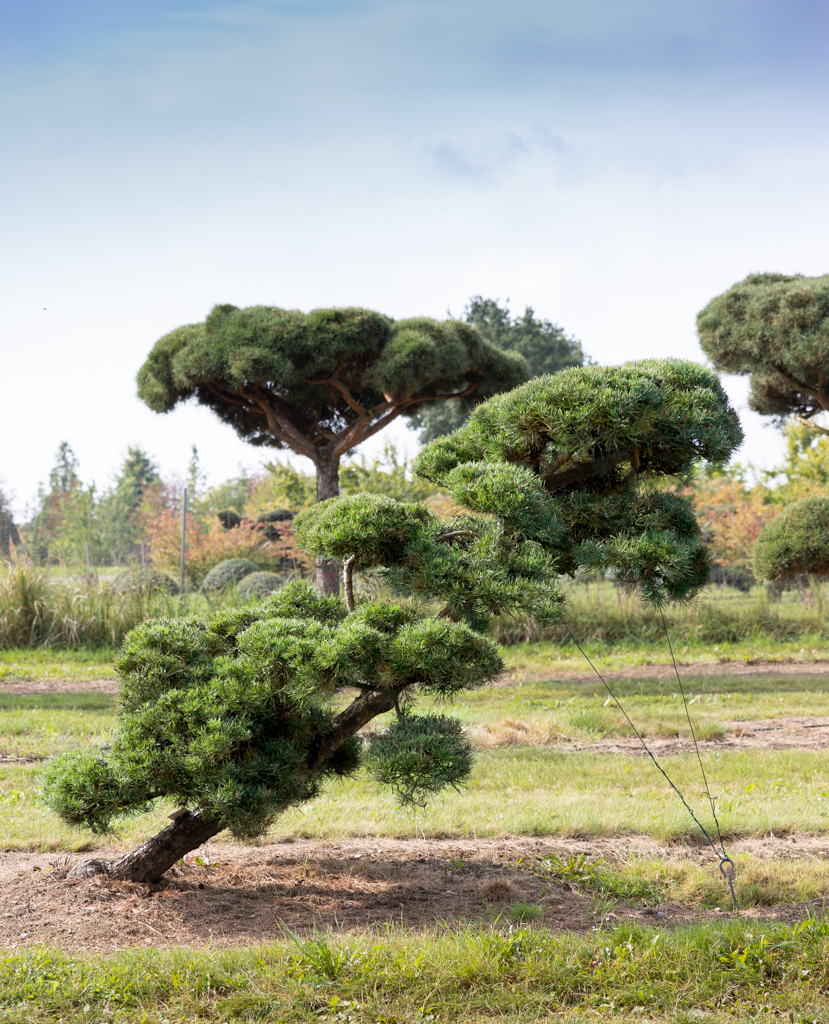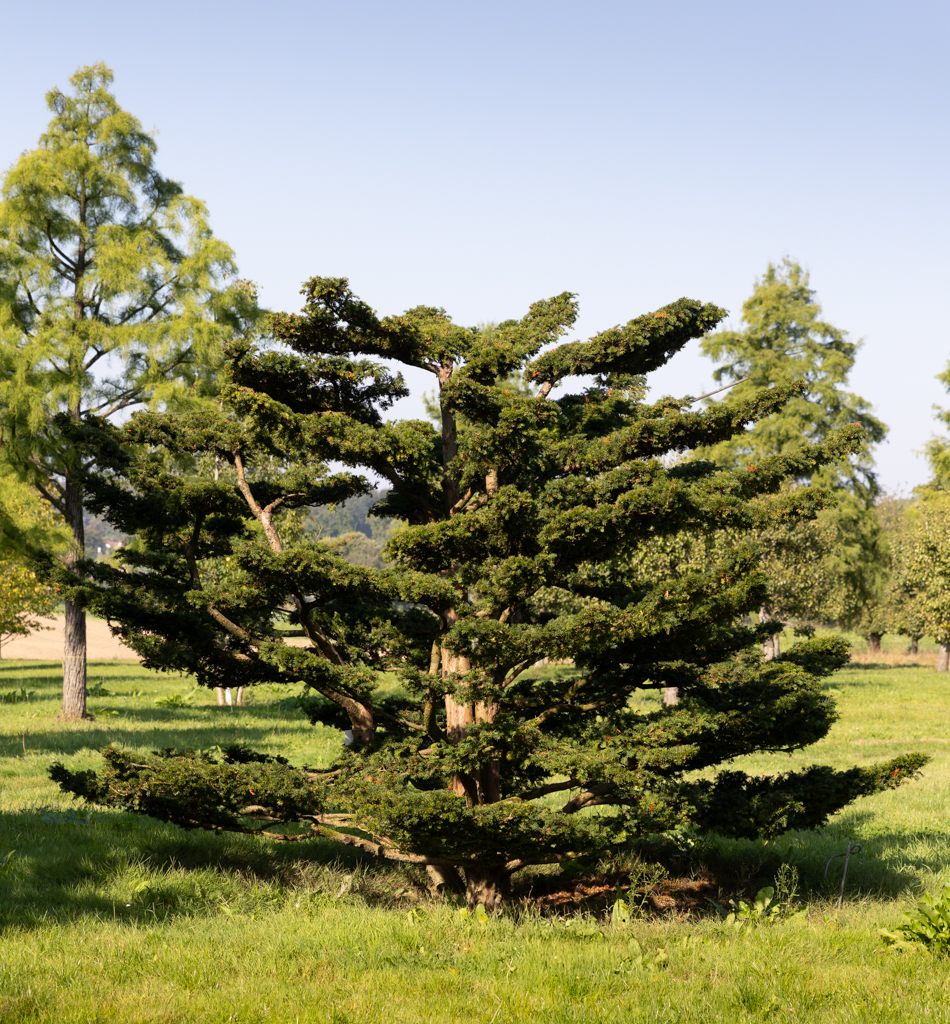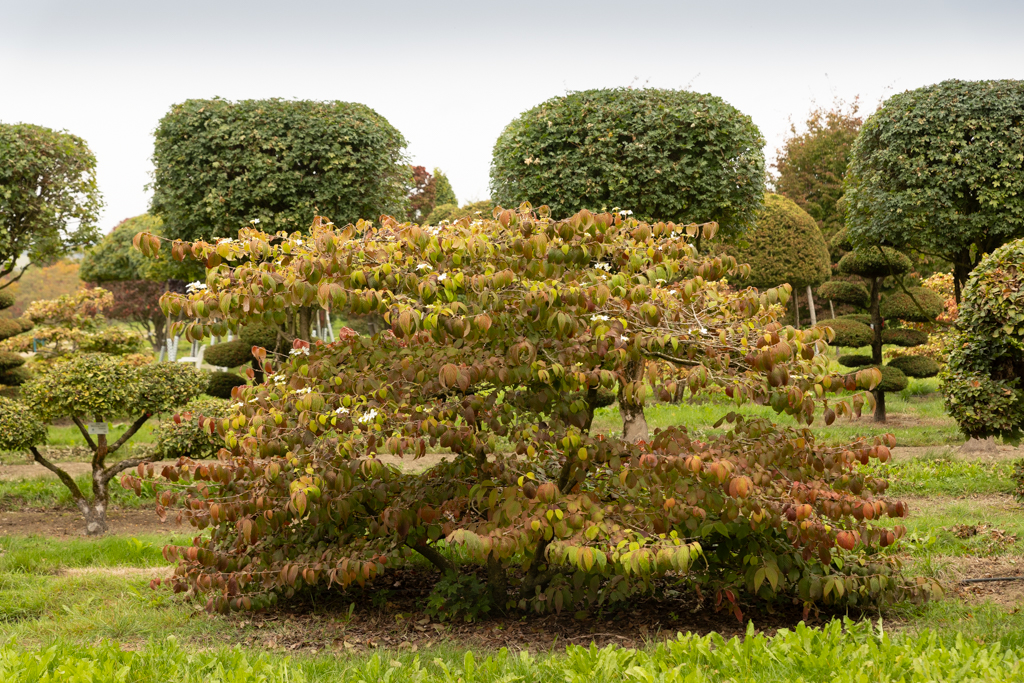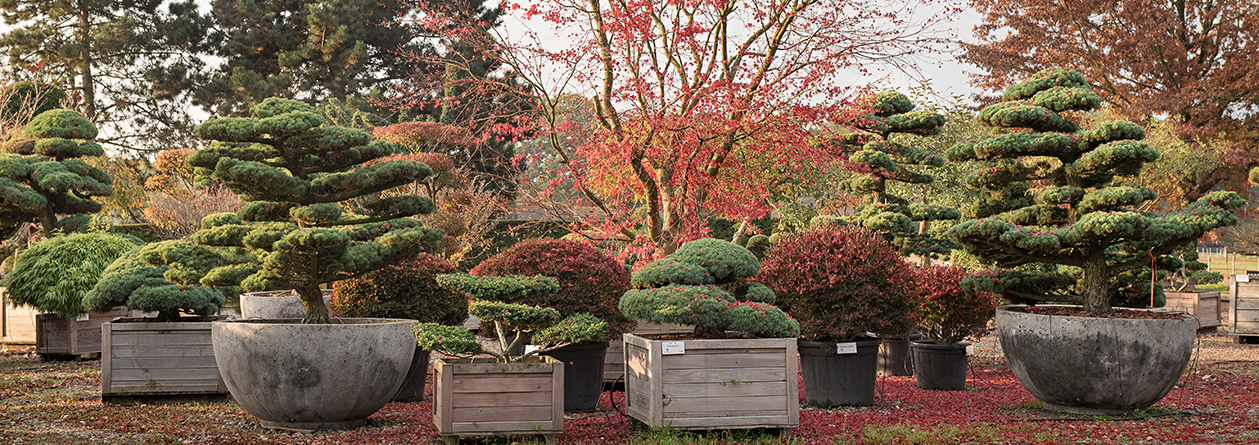
Bonsai
What started in a bowl (bon - bowl and sai - plant) grows big and so for many years we have also been growing large bonsai, bonsai in XXL format. Using a special pruning technique called Niwaki, which our master gardeners learn in Japan, we grow our trees into true masterpieces. We have been setting trends since the 1970s. We shape different genera, species and varieties into large bonsai. There are no limits to our imagination. On this page you can see some of our most beautiful bonsai.
Garden bonsai, the XXL bonsai
What starts small can grow big, which is why we have been growing XXL bonsai for many years. Using a special pruning technique called Niwaki, which our master gardeners learn in Japan, we grow our trees into unusual shapes. We were already setting trends in this way in the 1970s.
We shape different genera, species and varieties into large bonsai. There are no limits to your imagination.
On this page we show you some of our most beautiful bonsai.
FAQ - Frequently asked questions
Why large bonsai and garden bonsai are a valuable addition to green spaces
A large bonsai (NIWAKI) is more than just a tree - it is a living work of art that adds character, tranquillity and uniqueness to gardens and green spaces.
Discover the variety of our dream trees and let our experts advise you. Visit the Lorenz von Ehren nursery and make your garden dream come true.
- Large bonsai have an impressive charisma and immediately become the centre of attention in the garden. Their artistic shapes, which are the result of years of careful care and pruning techniques, make them unmistakable eye-catchers.
- NIWAKI can be integrated into both classic and modern gardens. They go perfectly with gravel and stone landscapes, but also harmonise well with other plants and grasses. They also cut an impressive figure as solitary trees on terraces or in front gardens.
- Garden bonsai are an investment in the future. Bonsai gain in beauty and value with age. They are long-lasting companions that can give pleasure for generations and represent a valuable memory and legacy.
A NIWAKI combines aesthetics, nature and craftsmanship in a unique way and gives your garden that certain something. A unique highlight that transforms your outdoor area into a true oasis of well-being!
Pruning tips
Large bonsai and garden bonsai are valuable plants that fascinate with their unique shape and structure. With the right care, they can have an impressive presence in your garden for many years.
To preserve the characteristic bonsai shape, bonsai require maintenance pruning at least twice per growing season. When doing so, please make sure to carefully remove the dead material to prevent areas of decay.
Good aeration of the plates is just as important, so regular cleaning out is also required here.
The following applies to pine trees: The right time to prune is when the candles sprout. These new shoots should then be shortened considerably.
Typical garden bonsai
1. Japanese maple (Acer palmatum)
- The Japanese maple is known for its delicate leaves and bright autumn colours in red, orange or yellow. This tree species is particularly popular in Asian-inspired gardens and is ideal as an outdoor bonsai as it has a stable and aesthetic growth habit.
2. Common yew (Taxus baccata)
- The yew is an evergreen tree species with fine needles and a characteristic, slightly sculptural shape. Yew trees are very durable and lend themselves well to topiary, which is why they are often used as garden bonsai. They are easy to care for and fit well into various garden styles.
3. Japanese larch (Larix kaempferi)
- The larch is one of the few conifers that shed their needles in winter. This change of foliage brings an interesting seasonal change to the garden. With its natural, simple elegance and striking autumn colours, the larch is a special garden bonsai.
4. Pine (Pinus spp.)
- In addition to the Japanese black pine, other pine species such as the Japanese white pine (Pinus parviflora) are also cultivated as bonsai. Pine species are well suited for garden bonsai as they are robust and offer a unique aesthetic due to their curved branches and interesting needles.
5. Juniper (Juniperus spp.)
- Juniper is one of the most common bonsai species. Its flexible growth habit and resistance to drought and cold make it ideal for outdoor cultivation. The gnarled branches and dense, needle-like foliage give it a particularly rustic character.

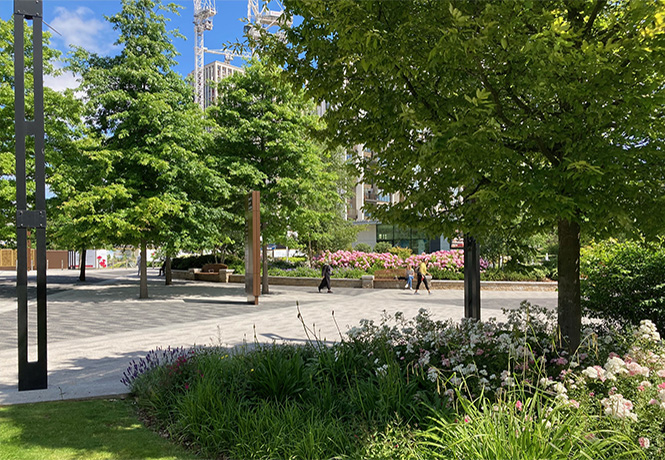
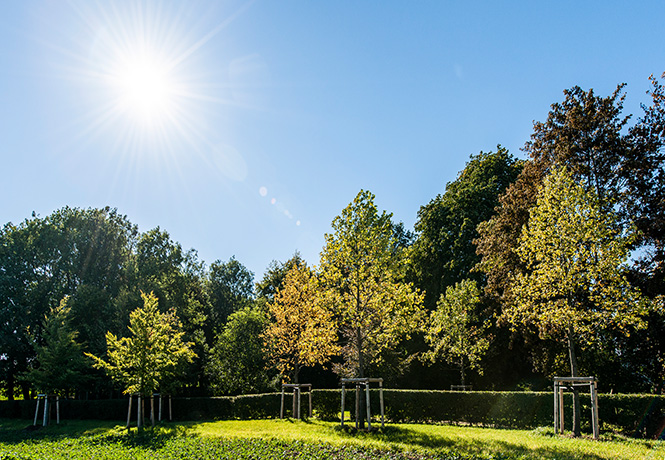
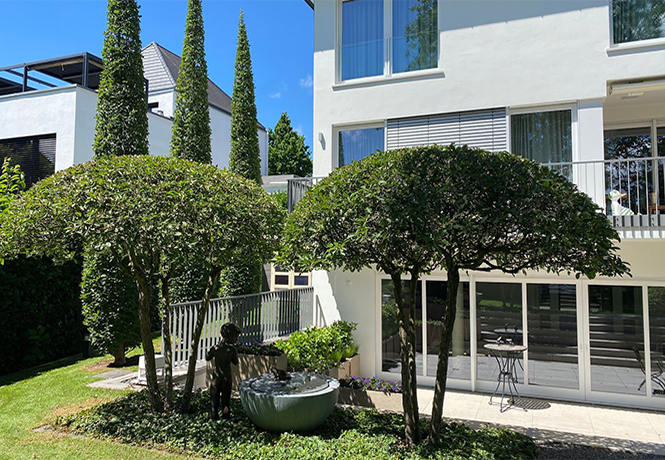
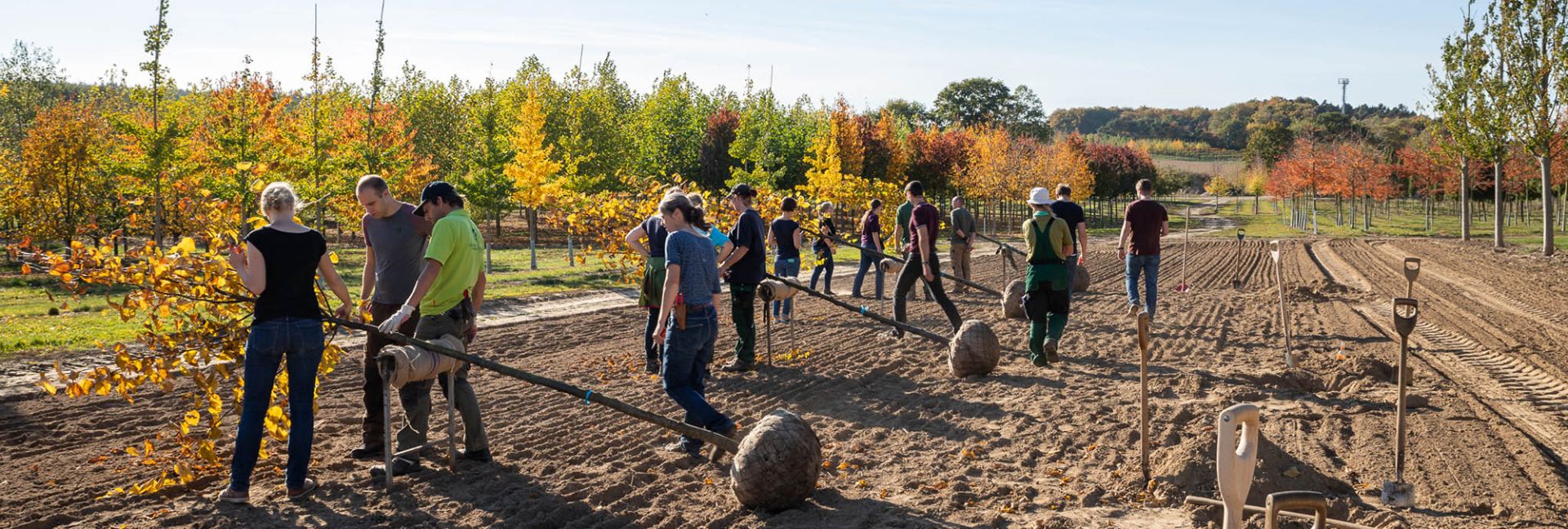

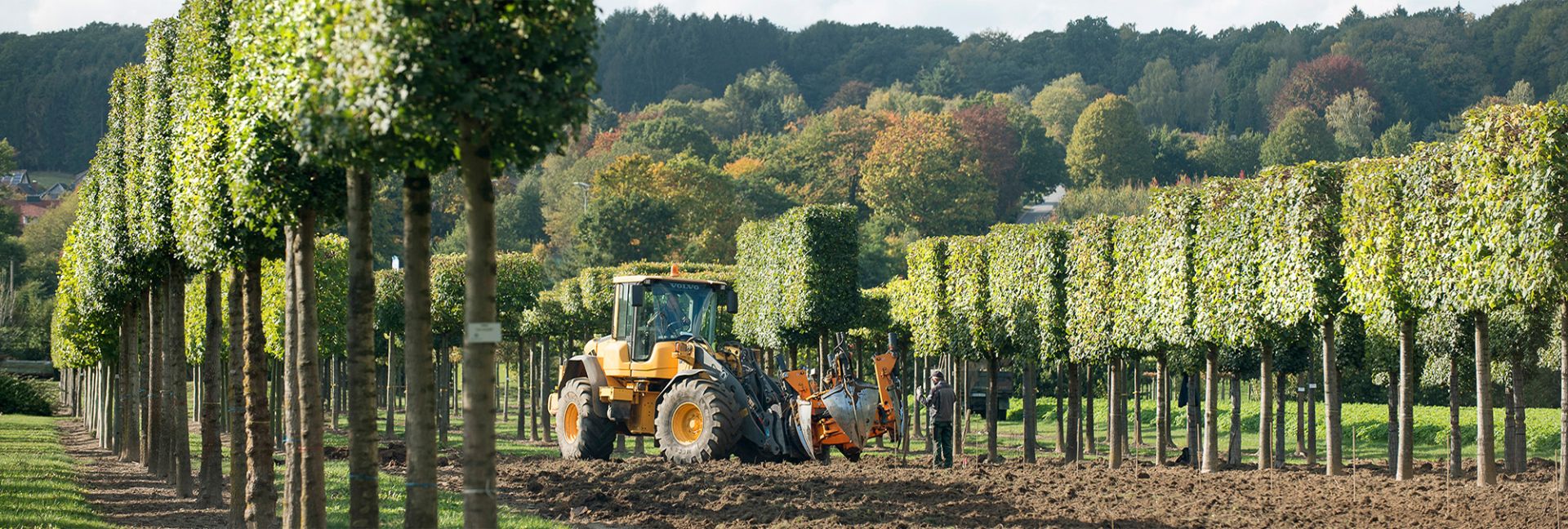

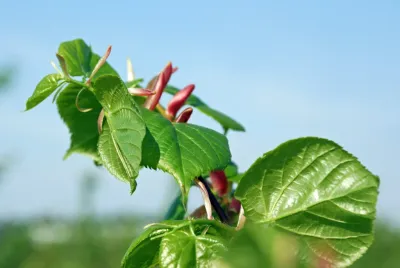
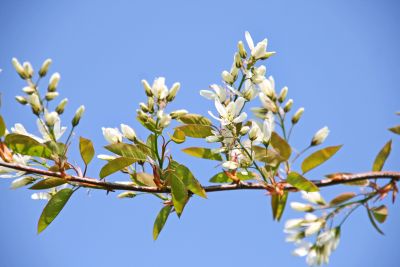

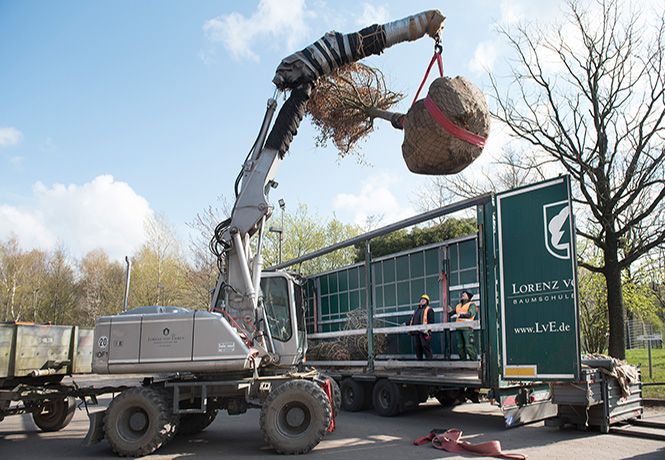
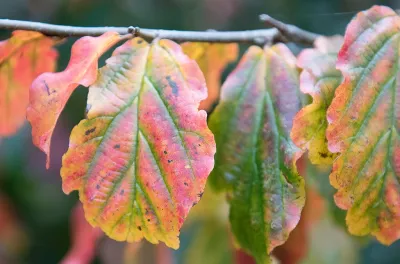

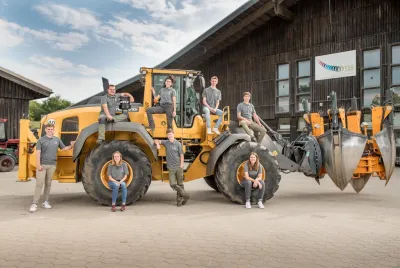
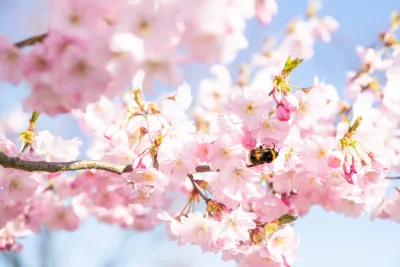
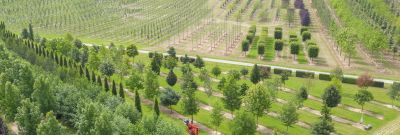

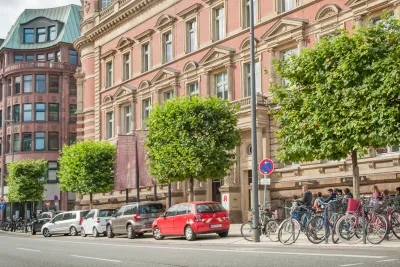
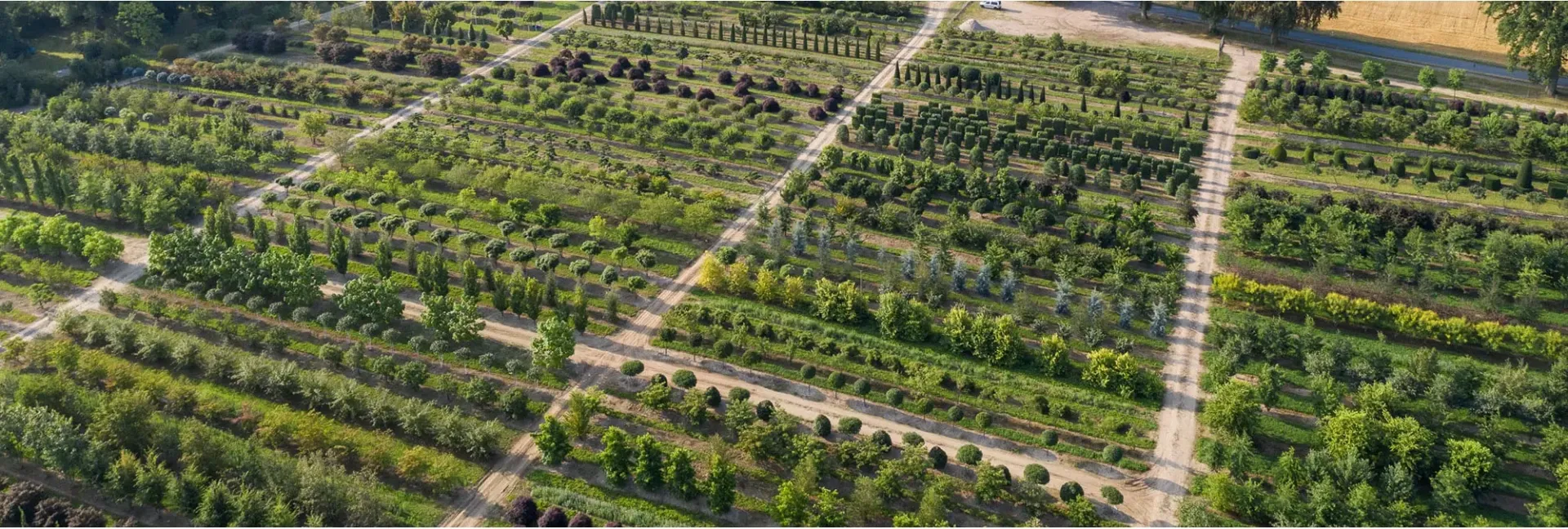
_400x400.webp)
